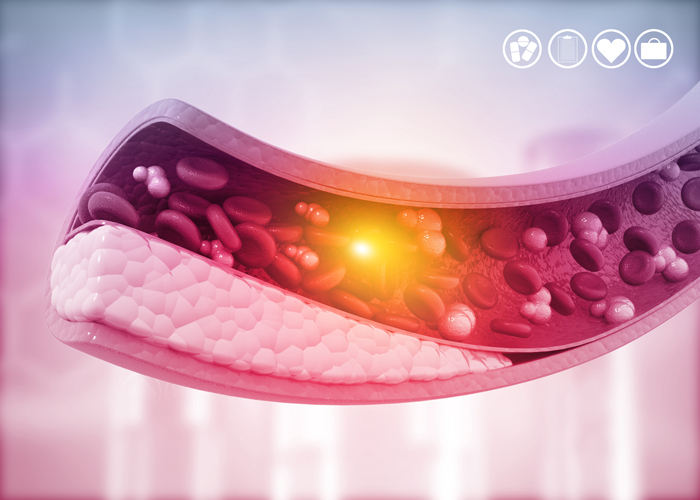Treatment for Thrombosis in Kondapur, Hyderabad
The circulatory system is an important organ system. Veins and arteries can sometimes be at risk due to injuries or surgeries. It is important to look for symptoms that might indicate that your circulatory system is in danger. Keep reading this article to find out about one such risk to your vein-deep vein thrombosis.
What do you Mean by Deep Vein Occlusions?
Deep vein occlusions or deep vein thrombosis is a condition that develops due to blood clots inside the veins. This usually occurs in the deeper veins of your body, especially in the legs. This may have symptoms or sometimes they might be asymptomatic.

What are the Causes of Deep Vein Occlusions?
The causes of deep vein occlusion of deep vein thrombosis (DVT) are as follows:-
- If you get a severe injury that causes damage to your blood vessels, it can block or narrow blood flow. This may result in the formation of a blood clot.
- A common side effect of surgery is damage to the blood vessels. This can lead to blood clots.
- If, after surgery, the patient rests continuously without little to any movement, blood clots may occur.
- If a person, mainly due to old age, just spends 90% of their time sitting with no movement, clots start to develop in the legs.
- Lastly, certain medications also increase the risk of blood clots. So, it is better not to take any medication without consulting a doctor and making sure that it is safe.
The Ways to Detect Deep Vein Occlusions (Symptoms)
These are the symptoms of Deep Vein Occlusions or Deep Vein Thrombosis (DVT):
- Your leg, ankle, or foot will start swelling significantly. This usually happens on one side but rarely on both legs.
- You will experience pain similar to a cramp in your affected leg. This pain usually starts in the calf and then spreads throughout your leg.
- There could be severe, unexplained pain in your leg.
- There might be an area of your skin that will feel warmer than the skin surrounding that area.
- The skin over the affected area will start to turn white or bluish or reddish color.
If people suffer from thrombosis in the arm, they may experience the following symptoms:
- Shoulder pain.
- Neck pain.
- Blue tinted skin color.
- Weakness in the hand.
- Your hands or arm will swell.
- Continuous pain that moves from the arm to the forearm.
When the deep vein thrombosis gets severe, a person might get Pulmonary embolism (PE). The symptoms for that are:
- Rapidness of the pulse.
- Rapid breathing.
- Your breath might become short suddenly.
- Coughing up of blood.
- A lightheaded or dizzy feeling.
- Chest pain that worsens when you breathe.
How do you Treat Deep Vein Occlusions?
The ways to treat deep vein occlusions are:
- Medications that thin your blood are recommended by your doctor. If your blood is thin, the risk of a blood clot is reduced.
- Compression stockings are used to prevent swelling. If the swelling reduces, then the risk of blood clots decreases.
- Blood filters placed inside veins help to filter blood properly and ensure smooth blood flow through your veins.
- If nothing works, or if the thrombosis gets severe, then surgery is always an option.
How can You Prevent Deep Vein Occlusions?
A few lifestyle changes can help a person prevent deep vein thrombosis.
- Have an active life. Exercise daily. Do things that will make sure your limbs are not on constant rest.
- Keep your blood pressure under control.
- Try to keep your weight under control. Obesity might lead to deep vein thrombosis.
- If you go through any surgery, take the blood-thinning medications recommended by your doctor.
- Try not to sit continuously for more than four hours.
Conclusion
Deep vein thrombosis should not be left untreated for too long. It can lead to life-threatening conditions such as Pulmonary Embolism. So, if you experience any of the symptoms mentioned in this article, contact a healthcare professional immediately.
Request an appointment at Apollo Spectra Hospitals, Kondapur
Call 1860-500-2244 to book an appointment
Deep vein thrombosis can lead to life-threatening situations such a pulmonary embolism.
Yes, walking is good for the healing process after you suffer blood clots. Not just walking, swimming, hiking, dancing, jogging, all of these are good for the recovery process after you suffer from a pulmonary embolism. Doing these can improve lung function and can decrease the symptoms of Deep vein thrombosis.
Symptoms
Our Doctors
DR. SANJEEV RAO K
MBBS,DRNB (Vascular)...
| Experience | : | 13 Yeras Experience |
|---|---|---|
| Speciality | : | Vascular Surgery... | Location | : | Kondapur |
| Timings | : | Mon- Sat: 5:00 PM to... |
Our Top Specialities
NOTICE BOARD
CONTACT US
CONTACT US
 Book Appointment
Book Appointment



.svg)
.svg)
.svg)
.svg)








